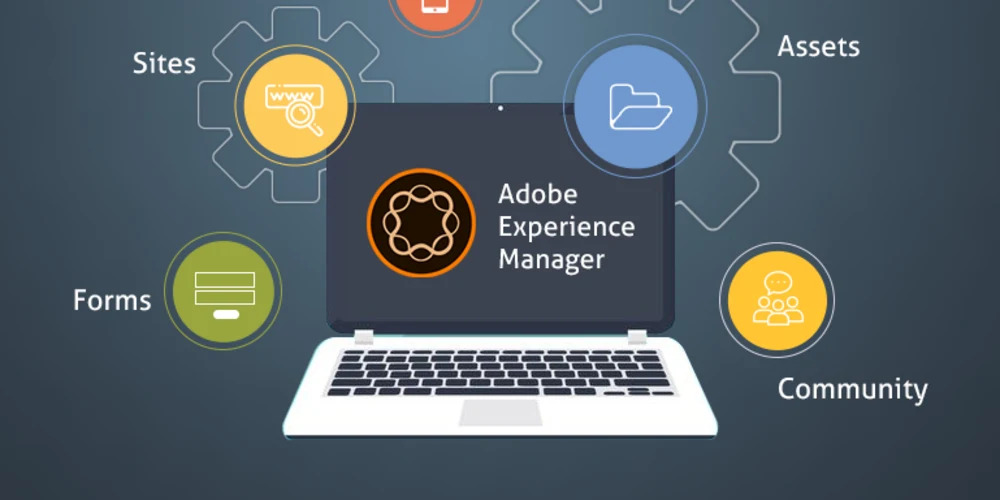AEM is a comprehensive content management system that allows organisations to create, manage, and deliver digital experiences across various channels. It offers a wide range of features, including content authoring, personalisation, and scalability. With AEM, businesses can streamline their content management process, deliver personalised experiences to their customers, and scale their digital presence.
In this blog, we will delve deep into the world of AEM implementation and provide you with expert insights to help you navigate the maze. We’ll discuss the challenges organisations often face, share tips for a successful implementation, offer strategies for overcoming hurdles, and explore best practices for optimising AEM implementations.
So, grab a cup of coffee, sit back, and let’s dive into the world of AEM implementation!
I. Understanding the AEM Landscape
A. Overview of AEM:
Before we dive into the implementation process, let’s first understand what AEM is all about. AEM is a powerful content management system that enables organisations to create, manage, and deliver digital experiences seamlessly. Its key features include a user-friendly interface, robust content authoring capabilities, and the ability to personalise content based on user preferences.
The benefits of AEM are manifold. It offers businesses the flexibility to manage their content efficiently and provide personalised experiences to their customers. With AEM, organisations can easily create and update content, ensuring that their digital presence is always fresh and engaging. Additionally, AEM’s scalability allows businesses to grow and adapt to changing market demands without worrying about technical limitations.
B. Common Challenges Faced:
While AEM offers a plethora of benefits, organisations often encounter challenges during the implementation process. These challenges can range from technical hurdles to organisational resistance to change. However, with proper planning, resources, and expertise, these challenges can be overcome.
One common challenge organisations face is the lack of clear goals and objectives. Without clearly defined goals, it becomes difficult to measure the success of an AEM implementation. It is crucial to identify specific objectives and align them with the business needs to ensure a successful implementation.
Another challenge organisations face is building a skilled team. AEM implementation requires collaboration between developers, designers, content creators, and stakeholders. Each role plays a crucial part in the implementation process, and it is essential to have the right expertise on board to ensure a smooth and efficient implementation.

II. Preparing for a Successful Implementation
A. Setting Clear Goals:
To ensure a successful AEM implementation, it is vital to set clear goals and objectives. These goals will serve as a roadmap for the entire implementation process, keeping everyone focused and aligned.
When setting goals, it is essential to identify specific and measurable objectives. For example, instead of setting a goal like “improve content management,” a better goal would be “reduce content creation time by 20%.” By setting specific goals, you can measure the success of your implementation accurately.
It is also crucial to align these goals with the business needs. Understand your organisation’s pain points and how AEM can address them. By doing so, you can ensure that your implementation is not only successful but also impactful for your organisation.
B. Building a Skilled Team:
A successful AEM implementation requires a skilled and diverse team. Each role within the team brings unique expertise and perspectives, contributing to the overall success of the implementation.
First and foremost, you’ll need developers who are experienced in AEM and its technical aspects. These developers will be responsible for customisation, integration, and ensuring that AEM meets your organisation’s specific requirements.
Designers play a crucial role in creating visually appealing and user-friendly experiences. They work closely with developers to ensure that the design is implemented seamlessly within the AEM framework.
Content creators are responsible for creating and managing content within AEM. They should be familiar with AEM’s content-authoring capabilities and best practices for creating engaging and SEO-friendly content.
Lastly, stakeholders are essential for providing insights and guidance throughout the implementation process. They represent the organisation’s interests and ensure that the implementation aligns with the overall business strategy.
C. Creating a Comprehensive Project Plan:
A comprehensive project plan is the backbone of a successful AEM implementation. It outlines the key components of the implementation, including timelines, milestones, and resource allocation.
The project plan should include a detailed timeline that breaks down the implementation into manageable phases. Each phase should have clear deliverables and deadlines, ensuring that the implementation stays on track.
Resource allocation is another crucial aspect of the project plan. Identify the resources needed for each phase and ensure that they are allocated efficiently. This includes not only human resources but also hardware, software, and other technical requirements.
Regular communication is vital throughout the implementation process. Schedule regular meetings to provide updates, discuss challenges, and ensure that everyone is aligned with the project goals. This will help identify and address any issues early on, minimising the impact on the overall implementation.

III. Overcoming Implementation Hurdles
A. Addressing Technical Challenges:
Technical challenges are inevitable during an AEM implementation. From integration issues to customisation complexities, these challenges can often be daunting. However, with the right approach and expertise, they can be overcome.
One common technical challenge is integrating AEM with existing systems and tools. This requires careful planning and coordination to ensure a seamless integration. It is important to identify the integration points early on and involve the necessary stakeholders to address any potential roadblocks.
Customisation can also pose challenges during an AEM implementation. While AEM offers a wide range of out-of-the-box features, organisations often require customisations to meet their specific needs. It is important to strike a balance between customisation and using the built-in capabilities of AEM to avoid unnecessary complexities.
Experts recommend following best practices and leveraging AEM’s documentation and resources to overcome technical challenges. Additionally, reaching out to the AEM community and forums can provide valuable insights and solutions to common technical hurdles.
B. Managing Change Effectively:
Change management plays a critical role in the success of an AEM implementation. Implementing a new system like AEM often requires organisations to change their existing processes and workflows. This can be met with resistance and reluctance from employees.
To manage change effectively, it is important to communicate the benefits of AEM to employees. Clearly explain how AEM will improve their work and make their lives easier. Involve employees in the decision-making process and provide training and support to ensure a smooth transition.
Organisational resistance to change can also be mitigated by involving key stakeholders early on. By including stakeholders in the implementation process, you can address their concerns and ensure their interests are represented.

IV. Best Practices for Optimising AEM Implementations
A. Content Strategy and Governance:
Developing a robust content strategy and implementing governance policies are essential for optimising AEM implementations. A well-defined content strategy ensures that your content aligns with your business goals and resonates with your target audience.
When developing a content strategy, consider factors such as content quality, metadata, and consistent branding. Ensure that your content is engaging, SEO-friendly, and optimised for different channels and devices.
Implementing governance policies helps maintain consistency and coherence across your digital experiences. Establish guidelines for content creation, approval processes, and workflows to ensure that your content remains consistent and of high quality.
B. Performance Optimisation:
Optimising AEM performance is crucial for delivering fast-loading websites and smooth user experiences. Slow loading times can frustrate users and lead to abandonment. To optimise performance, consider techniques such as caching, image optimisation, and code review.
Caching allows AEM to store frequently accessed content, reducing the load on the server and improving response times. Image optimisation involves compressing and resizing images without compromising quality, reducing their file size and improving load times. Regular code review helps identify and resolve any performance bottlenecks or inefficiencies in the implementation.
C. Continuous Learning and Improvement:
Investing in ongoing training and staying up-to-date with AEM’s latest features is essential for continuous learning and improvement. AEM is a dynamic platform with regular updates and enhancements. By staying current with these updates, you can leverage new features and functionalities to enhance your implementation.
Communities, forums, and networking events provide valuable opportunities to connect with other AEM professionals, share knowledge, and learn from each other’s experiences. Engage with the AEM community, participate in forums, and attend conferences and webinars to stay connected and expand your knowledge base.
Conclusion:
Navigating the AEM implementation maze may seem daunting, but with the right insights and support, it is achievable. In this blog, we explored the AEM landscape, discussed common challenges organisations face, and provided expert insights on preparing for a successful implementation, overcoming hurdles, and optimising AEM implementations.
Remember, proper planning, teamwork, and continuous improvement are key to a successful AEM implementation. Set clear goals, build a skilled team, create a comprehensive project plan, and address technical challenges and change management effectively. Follow best practices for content strategy, performance optimisation, and continuous learning.
With the right approach and expertise, you can successfully navigate the AEM implementation maze and unlock the full potential of this powerful content management system. So, what are you waiting for? Start your AEM implementation journey today and transform your digital experience!





